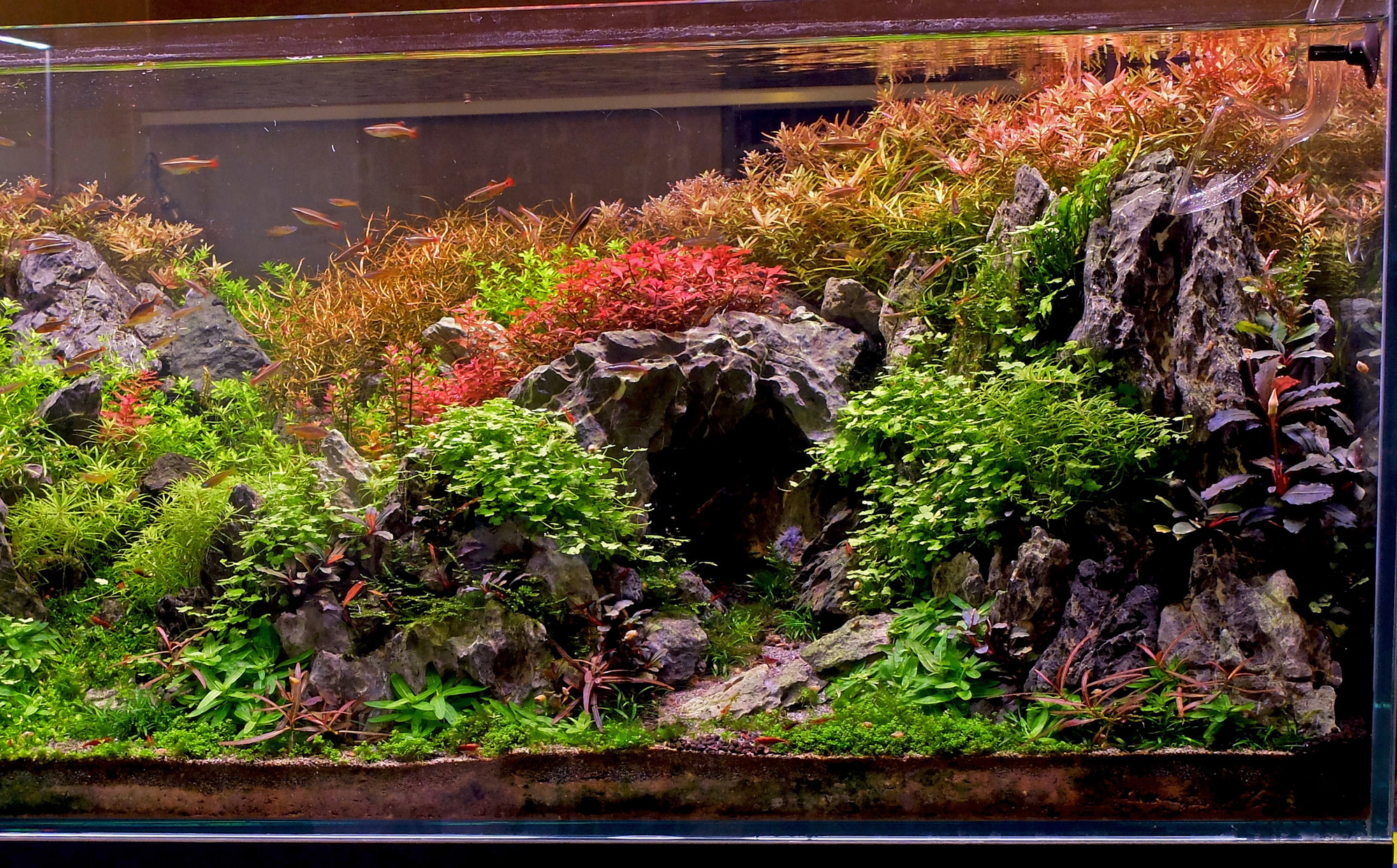
LIGHTING
Do we plan on growing shade plants or plants originating from open lakes? The light requirements for the former can be quite different from that of the latter.
Many red/colored plants exhibit more intense pigmentation under stronger lighting as well.
Many default kits (tanks + light + filter and/or other accessories) come with aquarium light that don’t produce enough light to grow more demanding planted aquarium plants.
What is the strength of a light?
How to choose the right spectrum?
Is T5 light or LED better?
All these and more are covered in the lighting section .
NUTRIENTS
All plants need a set of elements to grow well. Many of these nutrients are available naturally in our tap water. Fish waste also provides some. However, many elements will be still missing if we don’t add them.
Optimal fertilization is one of the core pillars for great plant health. We can achieve this through aquarium plant substrate (for rooted plants) and through water column dosing. Consistency is the key.
What and how much to dose?
Is fish waste alone adequate?
All these and more are covered in the nutrient dosing section.
CO2
Carbon dioxide levels in natural lakes are high (10-40+ppm) due to decomposition of organic material, that builds up CO2 gas, compared to equilibrium levels (2-3ppm) in a standard fish tank that has no CO2 injection.
Having optimal levels of CO2 in the tank is one of the biggest impact factors on plant health and quality of growth as 40% of plant dry mass is made out of carbon. This directly also affects algae presence/absence in a tank as algae presence has strong correlation to overall plant health.
Skipping CO2 injection still allows us to have nice planted tanks – if we pay special attention to choosing plants that can grow well in lower equilibrium levels of CO2.
What grows well without CO2? How to set up a CO2 system for planted aquarium? Is there really a big difference? All these and more are covered in the CO2 section.
Author : Dennis Wong
These Articles contains all the advice I would give my younger self if I could back in time. The choices and techniques that would have saved tons of time, money and effort to get the perfect tank up and running, with all the answers to the many questions I had when I started more than 10 years ago.